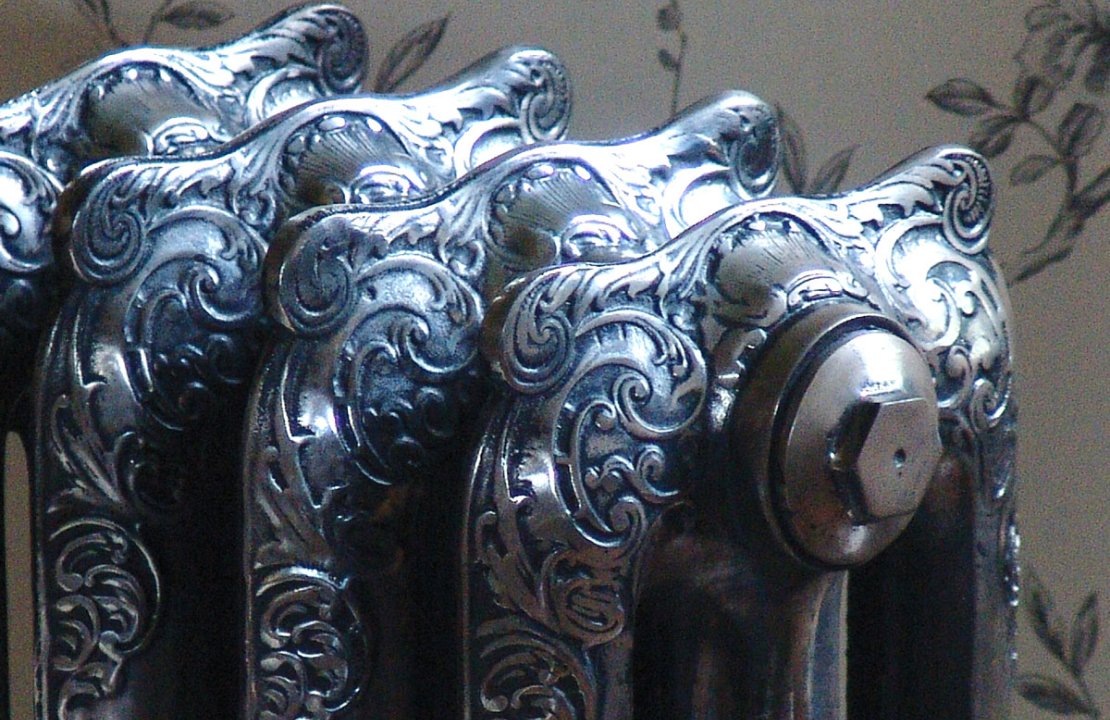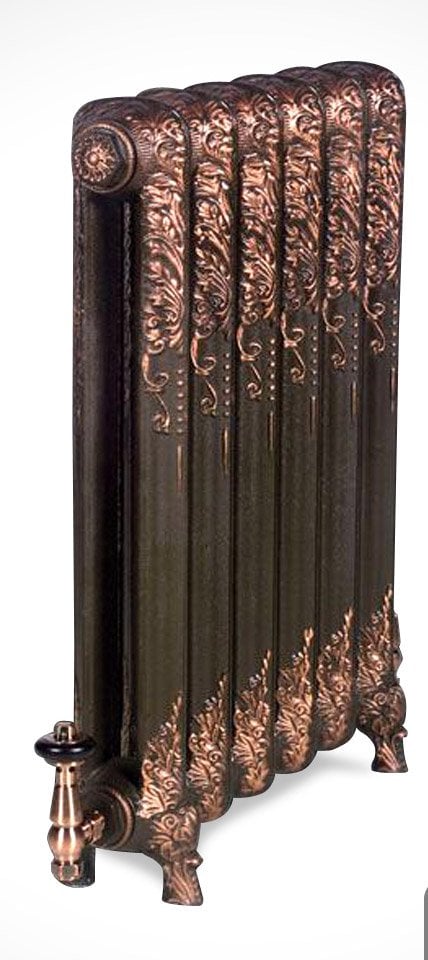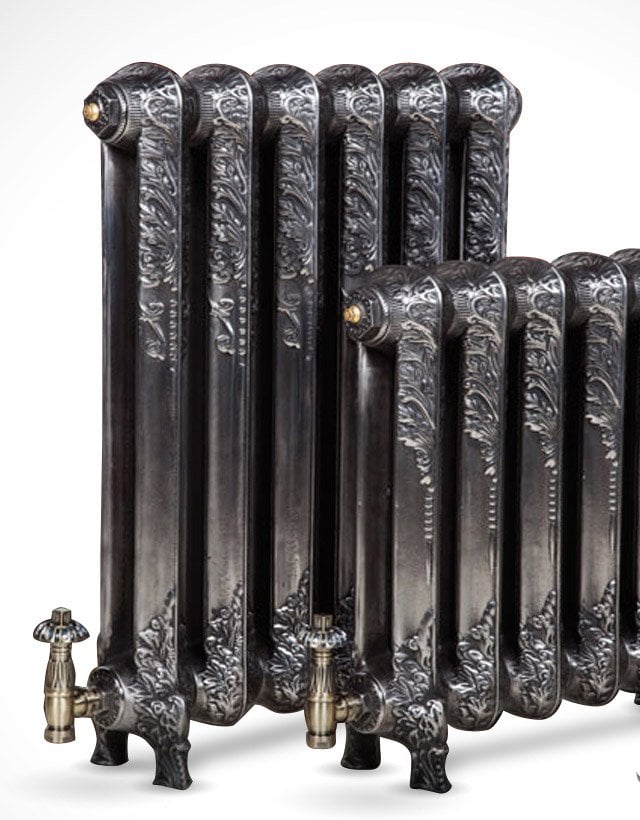How efficient is a period radiator and can it be used with modern heating systems?
Reproduction Cast Iron Radiators can be used with almost all domestic boilers and central heating systems – there is no issue using a Combi boiler with period radiators due to the volume of water large cast iron radiators hold or any other concern. You can use period style radiators in some parts of your building and steel radiators elsewhere if you wish – you do not have to have traditional radiators throughout if your budget does not allow for this. However, bear in mind that steel radiators do not hold their heat for as long as cast iron radiators, so what you save buying cheap steel radiators, you will spend on additional heating costs over the subsequent years.
Some people are worried about the efficiency of cast iron radiators and believe that the attractive appearance of a period radiator may be a substitute for performance. There is no need for any concern of this nature, as cast iron radiators are very efficient owing to their excellent conductivity and density. Cast iron radiators also work well with today's energy efficient and renewable energy heating systems as they utilise the natural heat generated from the ground or air to heat your home very efficiently.
Due to the density and conductivity of cast iron radiators, the heat that is transferred into them is held for longer in the cast iron far better than in the equivalent steel radiator. Steel will give a quick blast of heat and lose its temperature very quickly. As cast iron radiators hold the heat for longer, when the water completes another circuit of heat transfer from the source and into the system, the vintage look radiators hold their heat. Your rooms will be kept at the desired constant temperature creating a more efficient heating system without the system having to ramp up and ramp down constantly.
How are cast iron radiators made?
Cast iron radiators are cast, as their name implies. This means a mould is made out of sand in the shape of a radiator section (usually two moulds for each side of the section) and molten iron poured in and allowed to harden into cast iron. Once many sections are cast and checked and any imperfections removed, they are then joined together and built into a cast iron radiator which consists of two end sections with legs and multiple centre sections without legs. Cast iron radiators can be built in lengths of between 1ft and almost 2 metres. A built radiator has to be thoroughly tested for cracks, holes and weaknesses.
Practical considerations when ordering a period radiator
Period radiators are very heavy therefore when having them delivered you need to make sure there are at least two strong adults on site.
![]()
For some of the large radiators they are delivered in 2 or three parts and screwed together on site, as the entire radiator would be virtually impossible for two or three adults to lift. For example even a small St Thomas radiator 740mm high and 890mm wide weighs 128kg, the size of an obese adult.
It is a good idea to have wall stays to prevent your Victorian cast iron radiator from moving around as although cast iron radiators stand happily on their feet, if somebody does lean on one and it topples it could break a limb or crush a child. Wall stays are inexpensive and can be ordered at the time of ordering your radiators. They are easy to fix in place and will stop your antique radiator from moving.
When you order a period radiator from us, it is custom built to your specification (and pressure tested to ensure it is water tight). Most styles are available in a choice of heights, and of course different paint finishes. This means that you can order a range of widths of radiator and a range of different BTUs and therefore purchase a radiator that would best suit your allocated space. Therefore if you have a specific space where your radiator would ideally be located, you can plan the size of your radiator around room layout i.e. window locations, where furniture would be best placed etc. Steel radiators are sold in set sizes so do not offer this flexibility.
It is important that the cast iron heating unit is handled carefully during delivery and installation, otherwise faults such as cracks and damage to legs can occur. The correct way to carry a radiator is to keep it upright at all times. Never attempt to lift a Victorian cast iron radiator on your own or be tempted to drag the radiator across the floor surface into position for plumbing as this will cause strain on the water tight seals and cause leaking problems to occur.
The most common cause of leaks is over tightening of the valve tails into the bottom bushes of the radiator. Over tightening will crack the bush. When screwing the valve tail in to the bush you need to turn it finger tight then using a spanner turn it until there is only moderate resistance. Using a 4” (100mm) spanner it is difficult to over tighten so that would be our recommended tool.
The radiator finish that looks like shiny bare metal and for which we get so many enquiries is actually a radiator with a hand polished finish. Hand polishing reveals and polishes the original cast iron surface however as the bare metal is exposed to the air, this finish requires some attention to eliminate rust spots occurring. To maintain a hand polished radiator every 6 – 8 weeks you need to take a soft polishing cloth lightly sprayed with WD40 and dust your polished radiator to all polished areas; this will ensure the polished radiator remains rust free. We can also paint the Victorian cast iron radiators in any Farrow and Ball paint colour or metallic colour, and also in an antiqued or highlighted finish.
--------------------------------------------------------------------------------------------------------------------------------
We sell a variety of period radiators in many different styles, heights, widths, finishes and price points




Posted by Becky - Mar 06, 2015 - 10:24
Our Albert radiators are perfect and doing a great job of keeping us warm in our family bathroom. They give the perfect heat and style to our Victorian bathroom. Thanks for the wall stay and cleaning tips too. The WD40 with soft cloth works a treat ! We know we’ll enjoy these radiators for many years to come. Thanks for all your help and advice. Becky
Posted by Shelley - Mar 09, 2015 - 11:24
This article has been key to the purchase and installation of our Victorian Cast Iron Radiators.
The wall stays are excellent and give us great peace of mind to know they will stay put.
The warmth that these radiators give off is quite something!! Why on earth people use the dreadful and ugly modern steel radiators, I really don’t know.
The house looks stylish and is incredibly toasty!
Thank you very much!